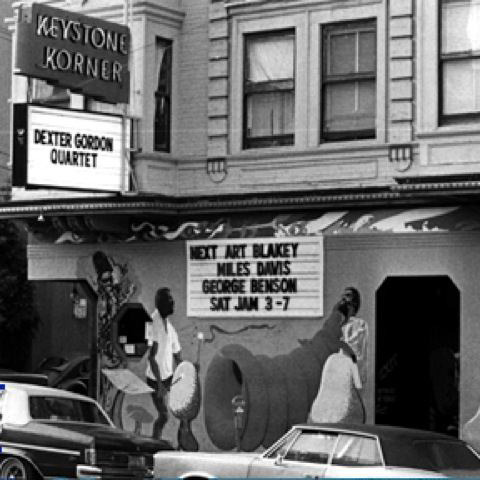
It has been the worst year in living memory for reading good books about jazz, despite (because of?) the rise and rise of the eBook. Good writers generally can’t get published for money, it’s as simple as that.
Thankfully, there are a few just published or on the horizon to make up for this a bit, and some that have caught my eye include The Jazz Standards: A Guide to the Repertoire by Ted Gioia, Soul Unsung by Kevin Le Gendre, and You’ll Know When You Get There by Bob Gluck, about Herbie’s Mwandishi period.
One I did enjoy was Keystone Korner: a Portrait of a Jazz Club. It made me think…
Next time you’re standing in a jazz club or sitting around perusing the club programme, looking at the menu or sipping a beverage ahead of the band coming on, spare a thought for the photographer. Ever thought what it would be like photographing the band you’ve come to see?
‘In My Years at Keystone’, a chapter in Keystone Korner: a Portrait of a Jazz Club photographer Kathy Sloane offers a glimpse of her time photographing Todd Barkan’s famed San Francisco club Keystone Korner in the 1970s. “I opened the door to Keystone Korner and walked into what felt like Manhattan. The jazz club was small and dark,” she writes, “and the sounds coming from the bandstand – the honks, the cries. The sirens of the streets, the confinement and freedom of New York, rushed at me with such force that I stood in the doorway as though rooted to the floor.” Sloane, a New Yorker, tells of the challenges of limited light in the club, the distraction of the psychedelic mural merging with the musicians, but what about that mirror to the right of the stage? She recalls: “I loved shooting musicians in the mirror.”
Sloane’s recollections are just one voice, and her photographs another point of entry, besides the dozens of recollections of the club by Barkan himself, waitresses, customers, musicians including Dave Liebman, Eddie Henderson, Eddie Marshall, Steve Turre, and poets, with California poet laureate Al Young writing the preface.
Barkan, now in New York programming Dizzy’s in Jazz at Lincoln Center, says of the club: “Keystone Korner was definitely a bright moment in song. It was very much a co-operative effort, a very rare oasis where everybody seemed to be focused, with the same feelings about the music, and that’s part of what made it a special experience.”
The club eventually ran out of money and closed in the early-1980s but its place in jazz history is secure with many important albums including McCoy Tyner’s Atlantis recorded on the North Beach premises at 750 Vallejo next to a police station. Some of the best reminiscences of all are from the waitresses and the club’s cook Ora Harris provides some great anecdotes. An essential read for anyone who’s ever stepped foot in a jazz club.